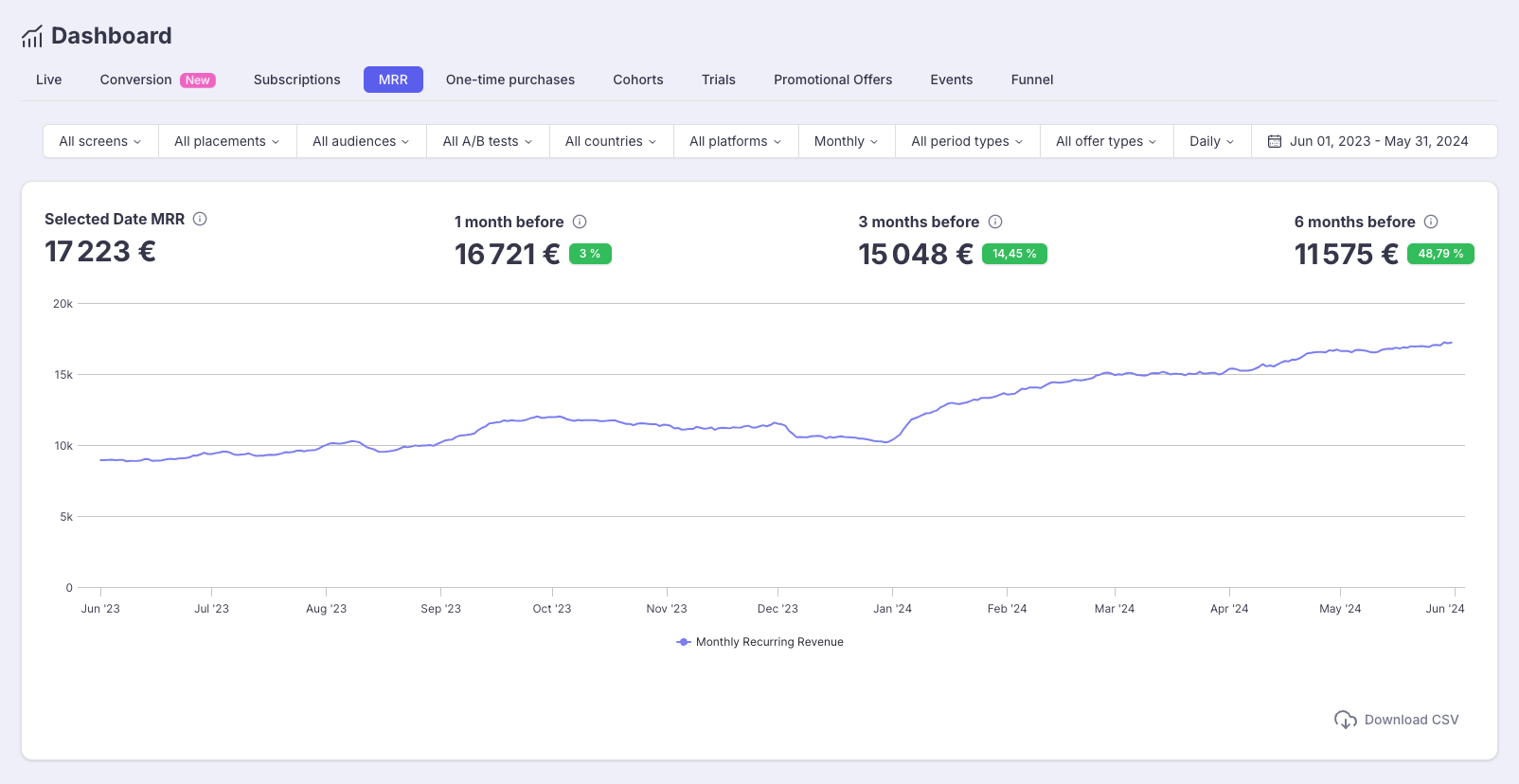Dashboard - MRR
This page provides details on the Dashboard MRR (Monthly Recurring Revenue)
The Monthly Recurring Revenue (MRR) is an indicator of the size and growth of your Subscription business.

MRR differs from standard revenue calculation for non-subscription business in the way that it spreads over the subscription length, the actual revenues generated by each subscription. It smoothens the noise generated by daily variations to make the general trend more readable.
General formulaHere is the general formula to compute the MRR for a given subscription period between
purchased_atandnext_renewal_at) for each day:
MRR = (amount_in_usd / number_of_days_between(purchased_at, next_renewal_at)) * 30Where:
amount_in_usdis the amount paid by the user during the related subscription periodpurchased_atis the date of the original purchase (for a new subscription) or last renewal date (for a subscription that already renewed)next_renewal_atis the theoretical next automatic renewal date, that is ignoring billing issues period.30is the average number of days in a month
Examples:
- A
$7weekly subscription that starts on2024-01-01and theoretically renews on2024-01-08accounts for(7.0 / 7) * 30 => $30.0MRR between those dates.
- A
$100yearly subscription of that starts on2024-01-01and theoretically renews on2025-01-01accounts for(100.0 / 366) * 30 => $8.20MRR between those dates. If it effectively renews on2025-01-01for another year (next renewal expected at2026-01-01), it will account for(100.0 / 365) * 30 => $8.22MRR between those dates.
- A
$10monthly subscription that starts with$1weekly introductory offer from2024-01-01to2024-01-08accounts for(1.0 / 7) * 30 => $4.29MRR. On2024-01-08it renews until2024-02-08where it accounts for(10.0 / 31) * 30 => $9.68MRR, and so on.
Changes in MRR computation as of November 2024
- The MRR amount is now calculated based on months of 30 days and not 28 days. This allows to have a more harmonized dashboard when comparing with other tools. Also this brings us closer to the average number of days in a month (accounting for February month and leap years), that is 30.4375 days on average.
- We no longer use the plan periodicity (that you have to fill from the console) to compute MRR, and instead count the number of days between the
purchased_atandnext_renewal_atdates of a subscription. This allows us to spread the subscription revenues across the exact number of days it is supposed to last, accounting for varying periods (especially important on monthly subscriptions, as the stores will have different policies for subscriptions that should renew at the end of the month). Previously if plan periodicity was mismatched or not filled, related MRR would be wrongly computed or not computed at all.- Paid offers are now properly accounted for. Previously, we would divide the amount paid during the offer over the base plan duration, which would underestimate the daily revenues during the offer.
- Refunds are also accounted for. A subscription that is refunded accounts for $0 MRR (purchase + refund cancels each others MRR during the related subscription period).
Updated about 2 months ago